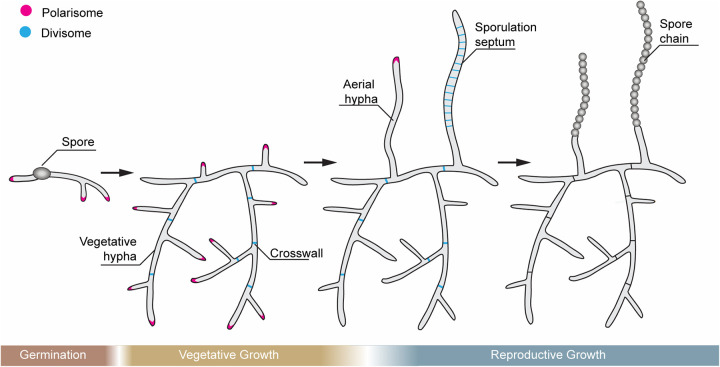FIG 1.
Classic Streptomyces life cycle. Spore germination involves swelling and the emergence of one or two germ tubes that grow by a combination of tip growth and branching into a dense vegetative mycelial network that penetrates the surrounding growth substrate. During vegetative growth, cell division occurs occasionally, leading to the synthesis of crosswalls that segment the growing hyphae into multigenomic compartments. To reproduce, streptomycetes raise aerial (reproductive) hyphae that escape the vegetative colony surface and grow into the air. The aerial hyphae undergo a synchronous cell division event leading to the synthesis of dozens of unigenomic prespore compartments. These further mature to give thick-walled, pigmented spores, which are then released into the environment to restart the life cycle. Two major biosynthetic protein complexes are highlighted: The polarisome (magenta), which drives the polar tip growth of vegetative and aerial hyphae, and the divisome (blue), which leads to crosswalls and sporulation septa.

